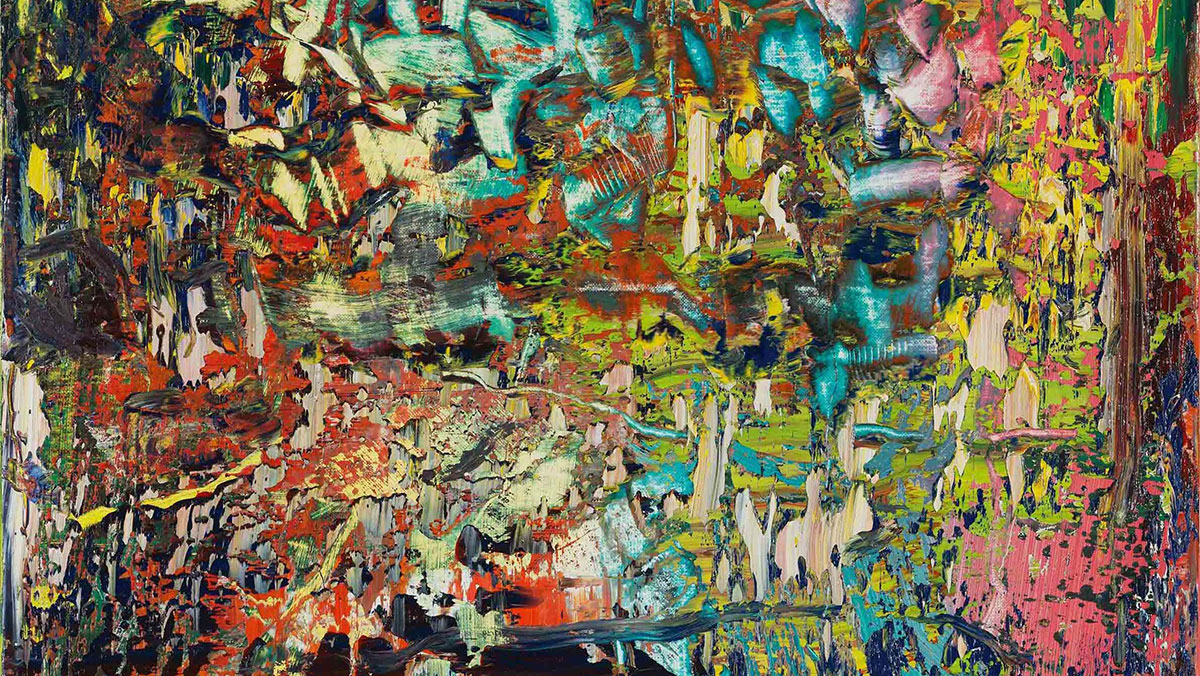ART CITIES: N.York-Gerhard Richter
 Gerhard Richter is one of the most important artists of his generation, with a career spanning from the 1960s to the present. His diverse and influential practice has been characterised by a decades-long commitment to painting and its formal and conceptual possibilities. Richter’s vast oeuvre, which also includes objects, installation, drawing, and photographic documentation, is grounded in deeply nuanced investigations of history, memory, and representation.
Gerhard Richter is one of the most important artists of his generation, with a career spanning from the 1960s to the present. His diverse and influential practice has been characterised by a decades-long commitment to painting and its formal and conceptual possibilities. Richter’s vast oeuvre, which also includes objects, installation, drawing, and photographic documentation, is grounded in deeply nuanced investigations of history, memory, and representation.
By Efi Michalarou
Photo: David Zwirner Gallery
With a career spanning from the 1960s to the present, Richter has pursued a diverse and influential practice characterized by a decades-long commitment to painting and its formal and conceptual possibilities. The artist has consistently probed the relationship between painting and photography, engaging a variety of styles and innovative techniques in a complex repositioning of genres. In Richter’s work, dual modes of representation and abstraction fundamentally question the way in which we relate to images. Gerhard Richter’s solo exhibition features new and recent abstract works created between 2016 and 2022. This is the first exhibition devoted to the artist’s work in New York since his retrospective at the Metropolitan Museum of Art, which was only briefly on view in March 2020. The exhibition presents a significant group of Richter’s “last paintings” (2016–2017); a number of these abstract oil, also featured is a new glass installation that continues Richter’s exploration of human perception and the built environment. An expansive suite of new works on paper from 2021–2022—some made with ink, and others with graphite and colored pencil, as well as “mood”, a series of colored ink sketches that were exhibited at the Fondation Beyeler in Basel in 2022.
Gerhard Richter was born in Dresden, Germany, in 1932, and began his career in the 1960s. His early works were heavily influenced by pop art and other contemporary movements, but he quickly developed a unique style that was all his own. One of his most well-known early works is “48 Portraits,” a series of paintings depicting influential figures of the 20th century, including politicians, writers, and artists. The portraits are all painted in a similar style, with a monochromatic palette and blurred, indistinct features, which reflect Richter’s interest in the mutability of identity and the subjective nature of perception. Throughout his career, Richter has continued to experiment with a wide variety of techniques and styles. He has painted landscapes, portraits, and still lifes, as well as abstract works that explore the boundaries of color and form. One of his most famous series is “October 18, 1977,” a group of paintings based on newspaper photographs of the Baader-Meinhof terrorist group. The series includes both photorealistic paintings and more abstract works, and is intended to explore the relationship between media images and political violence. Another notable aspect of Richter’s work is his use of color. He is known for his subtle, muted color palettes, which often feature shades of gray, brown, and other earth tones. In his abstract works, he creates complex and layered compositions using these colors, and his use of texture and brushwork adds depth and richness to the paintings. Richter has also worked extensively with photography, using it as a starting point for many of his paintings. He often takes photographs of everyday objects, landscapes, or people, and then manipulates the images using various techniques, such as blurring, cropping, or enlarging. He then uses these manipulated photographs as the basis for his paintings, which are often characterized by their photographic precision and their evocation of a sense of memory or nostalgia. One of Richter’s most recent series is “Birkenau,” which is based on photographs of the Auschwitz-Birkenau concentration camp. The series includes a series of abstract and monochromatic paintings, as well as a series of works based on photographs of the camp taken by the artist himself. The paintings are intended to explore the relationship between trauma, memory, and representation, and to create a space for reflection and contemplation on the horrors of the Holocaust.
Photo: Gerhard Richter, Abstraktes Bild (Abstract Painting), 2016, © Gerhard Richter, Courtesy the artist and David Zwirner Gallery
Info: David Zwirner Gallery, 537 West 20th Street New York, NY, USA, Duration: 16/3- , Days & Hours: Tue-Sat 10:00-18:00, www.davidzwirner.com/
.
